SourcifyChina Factory stands out for sourcing high-quality cold rolled and hot rolled steel from China. Our stringent quality control ensures exceptional product integrity and performance, meeting international standards effectively.
With a robust network, SourcifyChina provides competitive pricing due to long-term partnerships with top steel manufacturers. We leverage economies of scale for affordability.
Expertise in logistics is another hallmark of SourcifyChina. Our seamless coordination ensures timely delivery, reducing downtime and ensuring your projects run smoothly and efficiently.
Customer service at SourcifyChina is unparalleled. We offer personalized support, addressing all your queries and concerns promptly, ensuring a smooth purchasing experience from inquiry to delivery.
Choosing SourcifyChina Factory guarantees high-quality steel, competitive pricing, efficient logistics, and exceptional customer service. Your satisfaction and project success are our priorities, making us the preferred choice for steel procurement from China.
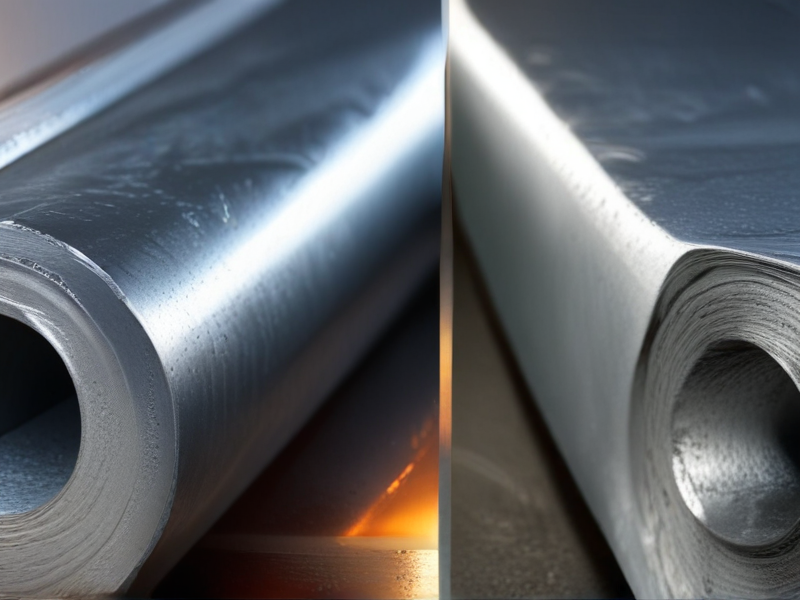
Cold rolled and hot rolled steel are two common types of steel, differentiated by their processing method and properties. While hot rolled steel is created at high temperatures, cold rolled steel undergoes additional processing for improved precision and surface finish.
– Hot Rolled Steel:
– Temperature: Processed above recrystallization temperature.
– Surface Finish: Rougher and has a bluish-gray tint.
– Strength: Less precision in mechanical properties.
– Cost: Generally cheaper due to fewer processing steps.
– Applications: Structural components, railroad tracks, and sheet metal.
– Cold Rolled Steel:
– Temperature: Processed at room temperature after hot rolling.
– Surface Finish: Smoother, with a more polished appearance.
– Strength: Tighter tolerances, higher strength, and hardness.
– Cost: More expensive due to additional processing.
– Applications: Automotive parts, home appliances, and metal furniture.
Key Comparisons:
– Dimensional Accuracy:
– Hot Rolled: Less precise
– Cold Rolled: Highly accurate
– Flexibility for Subsequent Processing:
– Hot Rolled: Easier to work with for larger structural jobs.
– Cold Rolled: Needs less additional machining, more suitable for high-precision tasks.
– Tolerance Levels:
– Hot Rolled: Looser tolerances
– Cold Rolled: Strict tolerances
Each type of steel offers unique advantages and is suited for specific applications depending on the requirements for surface finish, strength, and cost. Therefore, the choice between cold rolled vs hot rolled steel depends largely on the intended use and specific project needs.
Cold rolled steel offers precise dimensions and a smooth finish, ideal for projects requiring tighter tolerances and aesthetic appeal. Hot rolled steel is cost-effective and suitable for large-scale manufacturing and construction due to its malleability and ease of shaping.
– Cold Rolled Steel Applications:
– Automotive parts
– Home appliances
– Metal furniture
– Aerospace components
– Electrical panels
– Precision instruments
– Hot Rolled Steel Applications:
– Structural beams
– Railroad tracks
– Pipeline constructions
– Heavy machinery
– Shipbuilding
– Industrial equipment
Overall, the choice between cold rolled and hot rolled steel depends on the specific requirements of the project, such as dimensional precision, surface quality, and cost constraints. Cold rolled steel is preferred for high-quality, detail-oriented applications, while hot rolled steel is favored for its affordability and extensive use in heavy-duty structures.
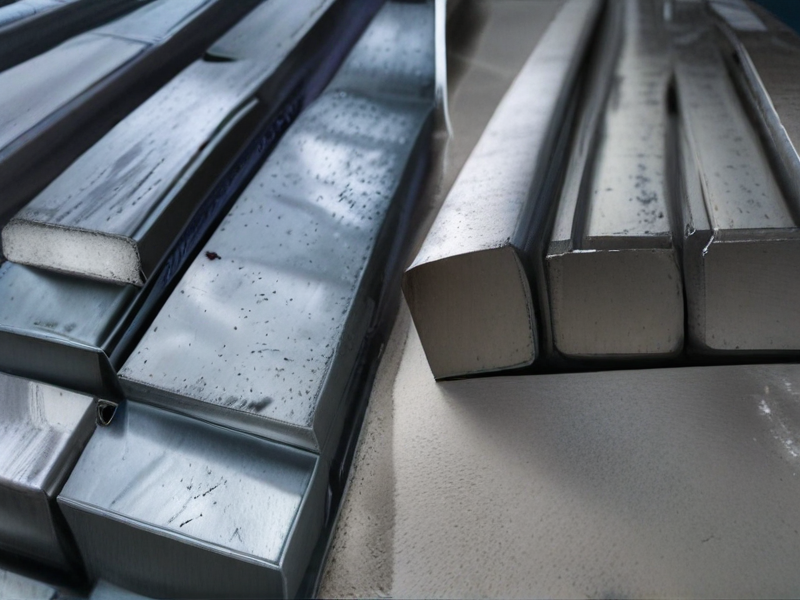

Cold Rolled Steel:
Cold rolled steel refers to the steel rolled at room temperature, achieving a smoother finish and tighter tolerances. This material is typically more rigid due to strain hardening, making it ideal for precise applications. The process involves additional steps such as pickling to remove scale, followed by rolling and sometimes annealing.
Hot Rolled Steel:
Hot rolled steel is processed at high temperatures, which makes it more malleable and easier to work with for large-scale industrial applications. It generally has a rougher surface texture and looser tolerance compared to cold rolled steel. This type of steel is suitable for projects where tight precision is not a primary concern.
Applications:
Cold rolled steel is often used in environments requiring a high degree of precision and surface finish, such as automotive panels and home appliances. Hot rolled steel, meanwhile, is commonly found in construction materials, railroad tracks, and other infrastructure due to its low cost and versatile shape-forming capacity.
Choosing the Right Type:
The choice between cold rolled and hot rolled steel depends on the specific requirements of your project. If dimensional precision and surface quality are critical, cold rolled steel is preferable despite its higher cost. For projects where these factors are less important and cost-efficiency is key, hot rolled steel is more suitable. Always consider the end-use and manufacturing requirements for the best material selection.
SourcifyChina employs rigorous quality control processes in the manufacturing of both cold rolled and hot rolled steel. The process begins with raw material inspection and selection to ensure high-quality input.
In hot rolling, steel slabs are heated to high temperatures, then passed through rollers to achieve desired thickness. Post-rolling, the material undergoes inspection for surface defects, dimensional accuracy, and mechanical properties.
Cold rolled steel, produced at room temperature, involves additional processing steps, including pickling and annealing. This yields a smoother finish and more precise dimensions. Strict protocols check for surface finish, thickness uniformity, and tensile strength.
Both cold and hot rolled steel products from SourcifyChina undergo extensive testing, including tensile tests, impact tests, and hardness evaluations. Documentation of results ensures traceability and accountability.
The final inspection phase involves a thorough assessment of surface imperfections and dimensional tolerances. By adhering to international quality standards, SourcifyChina guarantees products that meet or exceed customer expectations.
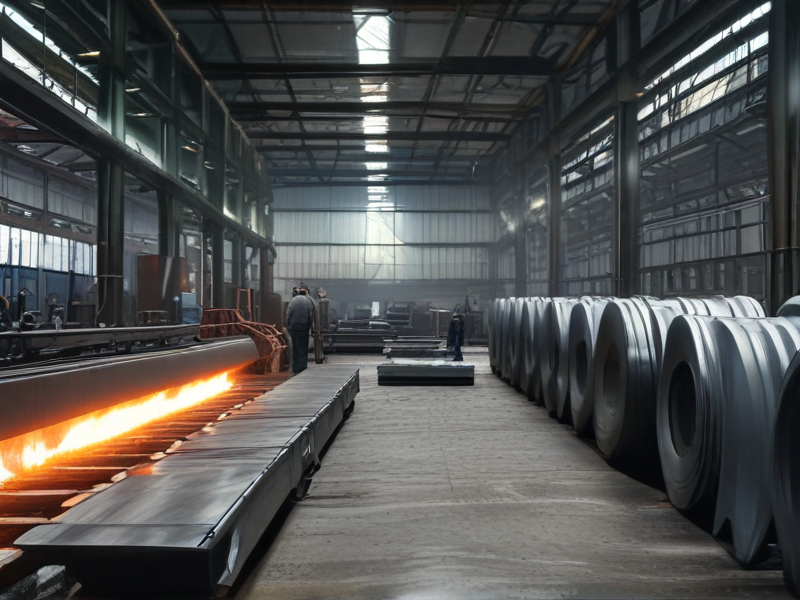
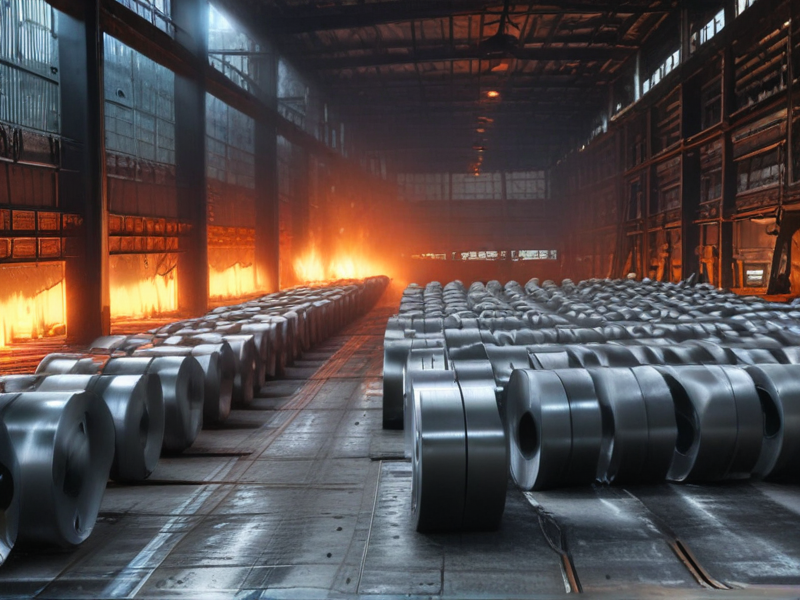
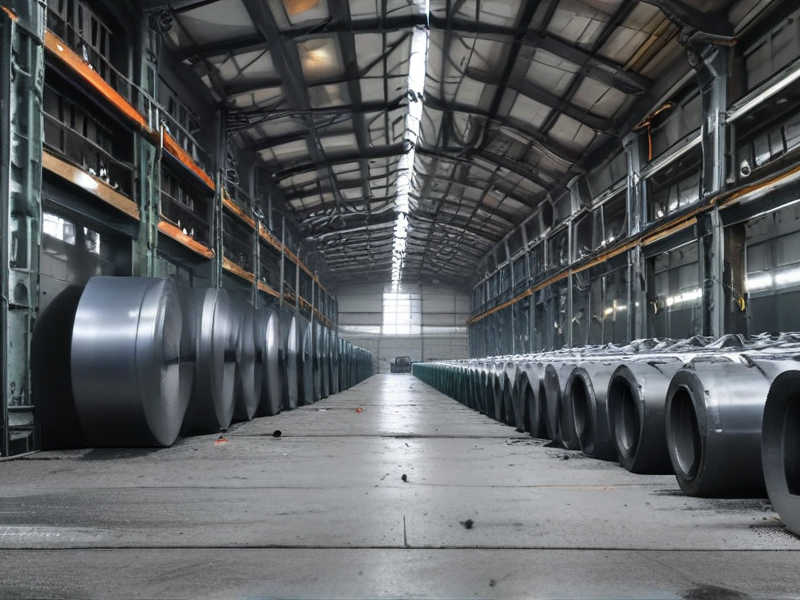
SourcifyChina specializes in sourcing high-quality steel products tailored to your needs. Their offerings include both cold-rolled and hot-rolled steel, each with distinct advantages.
Cold-rolled steel by SourcifyChina features a smoother finish and greater dimensional accuracy. It’s especially suited for applications requiring tight tolerances and a polished look. The enhanced strength and rigidity make it ideal for precision parts and high-end applications.
On the other hand, hot-rolled steel offered by SourcifyChina is more malleable and easier to work with. It’s typically used in construction and infrastructure projects due to its excellent weldability and formability. Though it may have a rougher surface, its cost-effectiveness and versatility compensate for this.
SourcifyChina ensures all their steel products, whether cold-rolled or hot-rolled, meet stringent quality standards. They provide comprehensive support throughout the procurement process, ensuring timely delivery and competitive pricing. Ultimately, the choice between cold-rolled and hot-rolled steel depends on your specific project requirements and budget constraints.
By partnering with SourcifyChina, clients benefit from the company’s extensive industry experience and dedicated customer service, making them a reliable supplier for your steel needs.
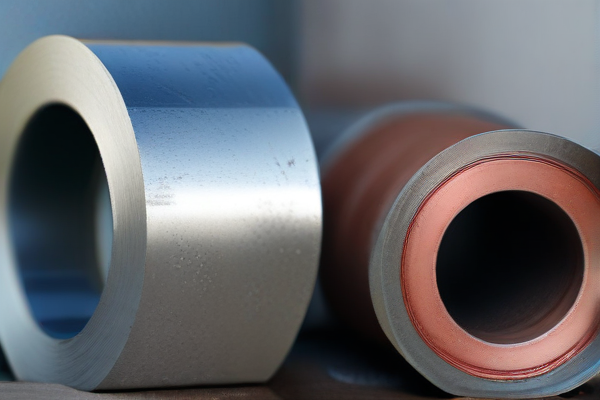
Cold rolled and hot rolled steel are two distinct processes that impart different qualities and benefits to steel products, suited for various applications.
Benefits of Cold Rolled Steel:
– Superior Surface Finish: Cold rolled steel has a smoother, more polished surface.
– Higher Precision: Offers better dimensional accuracy and tighter tolerances.
– Increase in Strength: Cold working increases the steel’s overall tensile strength and hardness.
– Enhanced Formability: Ideal for applications requiring precise shapes and fine details.
– Reduced Size Variability: Minimal thickness variation, perfect for applications where uniformity is key.
– Aesthetically Pleasing: Enhanced finish makes it suitable for visible end-user products.
– Improved Machinability: Easier to cut, machine, and handle, reducing manufacturing time.
Benefits of Hot Rolled Steel:
– Cost-Effective: Generally cheaper due to the less complex manufacturing process.
– Better for Large-Scale Projects: Ideal for applications where large structural components are required.
– High Ductility: Easier to form into various shapes and sizes without cracking.
– Larger Sizes and Thicker Sheets: Available in more substantial dimensions, making it ideal for heavy-duty applications.
– Good for Welding Applications: More predictable and consistent performance when welded.
– Ease of Manufacturing: Less complex process, enabling quick production runs and faster turnaround times.
– Inherent Toughness: Greater impact resistance, suitable for applications needing robust materials.
Choosing between cold rolled and hot rolled steel involves understanding the specific requirements of your project. Cold rolled steel excels in applications demanding precision and high-quality surface finishes, while hot rolled steel is a cost-effective solution for large-scale, heavy-duty structures. Each type brings unique advantages, making them indispensable in various industrial, construction, and manufacturing sectors.
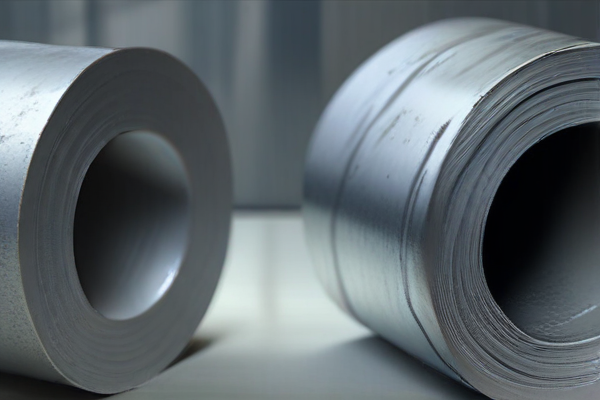
Cold rolled steel and hot rolled steel are two types of steel processing methods that produce different characteristics and qualities in the final product. Here are some key differences:
– Surface Finish:
– Cold Rolled: Smooth, with higher precision and better surface finish.
– Hot Rolled: Rougher surface, often covered with scale.
– Dimensional Accuracy:
– Cold Rolled: Higher dimensional accuracy and uniformity.
– Hot Rolled: Less precise dimensions due to the cooling and shrinking process.
– Strength and Hardness:
– Cold Rolled: Higher tensile strength due to work hardening during processing.
– Hot Rolled: Generally has lower tensile strength and is easier to work with.
– Applications:
– Cold Rolled: Used in applications where high precision, surface condition, and strength are essential—such as automotive parts, home appliances, and metal furniture.
– Hot Rolled: Ideal for construction use, welding, and applications where higher tolerances and smooth finishes are not required.
– Cost:
– Cold Rolled: Generally more expensive due to the additional processing steps.
– Hot Rolled: Typically less expensive to manufacture.
– Production Process:
– Cold Rolled: Steel is processed further after cooling, typically involving annealing and temper rolling.
– Hot Rolled: Steel is rolled at high temperatures and requires less processing time.
– Thickness:
– Cold Rolled: Often used for thinner gauges.
– Hot Rolled: Suitable for thicker gauges.
Understanding these differences is crucial for selecting the right type of steel for your specific needs and applications.
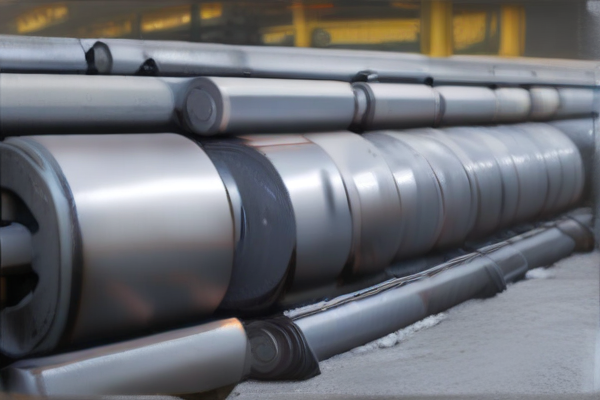
SourcifyChina offers premium custom products and projects using both cold rolled and hot rolled steel. Cold rolled steel, with its smooth surface, is ideal for precision applications and detailed work. Hot rolled steel, known for its strength and durability, is perfect for heavy-duty structures and industrial use.
Cold rolled steel undergoes further processing, making it suitable for projects requiring tight tolerances and superior surface finish. It’s often used in automotive components, furniture, and home appliances. The finer finish of cold rolled steel makes it a preferred choice for aesthetic and detailed design requirements.
Hot rolled steel, while less precise in terms of dimensions, is cost-effective and ideal for large-scale manufacturing. Its applications range from construction beams to rail tracks and large machinery. This type of steel can endure high stress, making it perfect for structural applications where exact dimensions are less critical.
SourcifyChina’s ability to supply both types of steel ensures versatility in custom projects. Whether you need the high precision of cold rolled steel or the robust durability of hot rolled steel, SourcifyChina caters to diverse industry needs. Their expertise in material selection and processing guarantees the right solution for your specific project requirements, delivering quality and reliability.
SourcifyChina is a distinguished name in the steel industry, specializing in the provision of premium cold rolled and hot rolled steel products. Renowned for their robust supply chain and stringent quality control protocols, the company delivers unmatched excellence in both forms of steel to cater to diverse industrial needs. Cold rolled steel from SourcifyChina is processed at room temperature, offering superior surface finish, higher strength, and tighter tolerances, making it ideal for applications requiring precision and aesthetic excellence such as automotive parts and household appliances. Conversely, their hot rolled steel undergoes processing at significantly higher temperatures, imparting enhanced malleability and ease of shaping, which is suitable for structural components, large pipes, and construction projects. By adhering to international quality standards and leveraging advanced technological processes, SourcifyChina ensures that each batch of steel not only meets but exceeds client expectations. Their commitment to sustainability and innovation further underpins their role as a reliable partner in the global steel market.
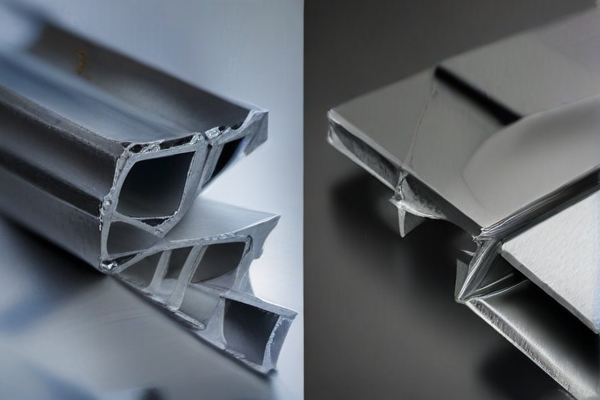
Cold rolled and hot rolled steel are essential materials with varied applications in the aerospace, defense, and marine industries. Cold rolled steel is known for its precise dimensions, smoother surface finish, and increased strength due to strain hardening during the rolling process. These characteristics make it particularly suitable for aerospace applications where precision and performance are critical. In the aerospace industry, cold rolled steel is often used for components that require high strength-to-weight ratios and exacting tolerances, such as structural elements, landing gear components, and various internal mechanisms. In the marine industry, the corrosion resistance and enhanced mechanical properties of cold rolled steel make it ideal for parts exposed to harsh marine environments, like engine components and structural supports in the shipbuilding process.
Hot rolled steel, on the other hand, is produced at higher temperatures, making it easier to shape and form into larger sections, an advantage particularly useful in the defense sector for the production of heavy-duty components. Hot rolled steel’s slightly rougher surface and less precise dimensions are less critical in applications like the construction of armored vehicles, large caliber gun barrels, and heavy-duty structural elements where strength and durability are paramount. In the marine industry, hot rolled steel is commonly employed for the hulls and decks of ships, taking advantage of its malleability and cost-effectiveness for large-scale production. Both cold rolled and hot rolled steel provide indispensable benefits across these industries, with the choice largely depending on the specific requirements of strength, precision, and environmental resilience in the intended application.
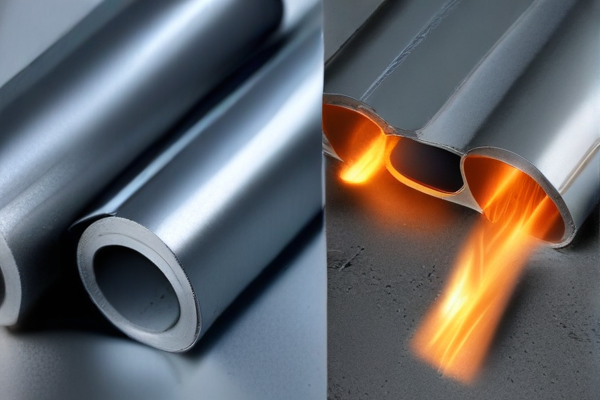
Cold rolled steel (CRS) and hot rolled steel (HRS) find distinct applications in the automotive industry due to their physical properties. CRS is prized for its high precision, smooth surface finish, and superior mechanical properties. These features make it ideal for manufacturing automobile body panels, structural parts, and precision components. The surface finish of CRS is particularly advantageous for applications requiring coating or painting, as it provides an ideal substrate, enhancing the vehicle’s aesthetic appeal and durability. Additionally, its dimensional accuracy and tight tolerances reduce the need for further machining, translating to cost savings and increased production efficiency.
In the electronics industry, CRS is similarly favored for its excellent surface quality and precise dimensions. These attributes are crucial for constructing enclosures, chassis, and intricate electronic components where fine tolerances are required. For example, CRS is often used in the manufacturing of computer cases, server racks, and other housing units that demand high strength and a clean finish. Conversely, HRS, which is less precise but significantly easier and cheaper to produce, is typically reserved for larger, less critical structures where minor surface imperfections and broader tolerances are acceptable. Hot rolled steel’s applications might include bulkier structural elements like frames and supports, where the primary concerns are strength and not surface aesthetics. Thus, while both forms of steel are critical to the automotive and electronics industries, CRS tends to be reserved for applications requiring high precision and finish, whereas HRS is utilized for sturdier, foundational purposes.
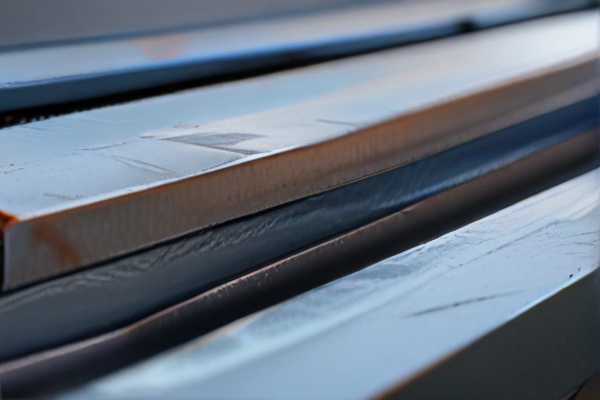
Cold rolled and hot rolled steel are both essential to construction, each offering unique properties suited to different applications. Hot rolled steel is processed at temperatures above the recrystallization point, resulting in a material that is more malleable and easier to shape. This makes it ideal for large structural components like I-beams, rails, and other heavy-duty projects where precision is less critical but strength and durability are paramount. Conversely, cold rolled steel is processed at room temperature, which yields a material with superior surface finish and tighter tolerances. This makes it ideal for applications requiring high precision and aesthetic quality, such as architectural elements, machinery parts, and automotive components. Its dimensional accuracy also reduces machining time and cost, which is advantageous in the construction industry.
In the domain of energy, both cold rolled and hot rolled steel play crucial roles as well. For instance, hot rolled steel’s ease of fabrication and high strength-to-weight ratio make it valuable in the construction of wind turbine towers, oil rigs, and pipelines. The ability to form large, robust structures ensures stability and longevity in demanding environments. On the other hand, cold rolled steel, with its higher yield strength and fine surface finish, is often used in solar panel frames, electrical cabinets, and other renewable energy infrastructure. Its superior corrosion resistance, achieved through additional processing steps, ensures long-term performance and reliability in diverse conditions. By leveraging the unique properties of cold rolled and hot rolled steel, the energy sector can optimize both performance and cost-efficiency across a range of applications.
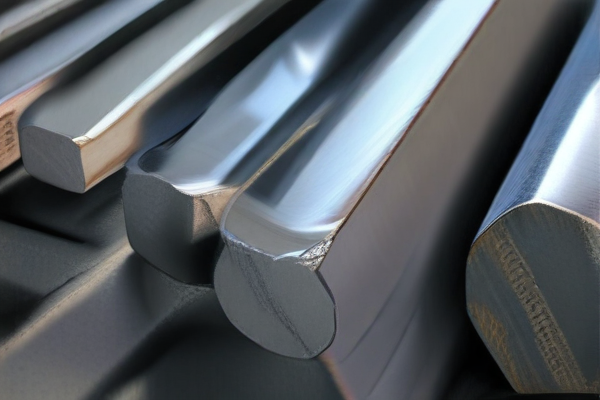
In the industrial equipment sector, the choice between cold rolled and hot rolled steel significantly impacts the manufacturing process and the performance of the final product. Hot rolled steel, produced at high temperatures, generally offers a rougher surface and less precise dimensions, making it ideal for applications where tight tolerances are not critical. Its cost-effectiveness and ease of production make it a preferred choice for constructing heavy-duty equipment such as structural beams, machine frames, and agricultural implements. The inherent flexibility and ductility of hot rolled steel make it easier to shape and form, which is beneficial for large-scale industrial operations where custom configurations and mass production are required.
Conversely, cold rolled steel, subjected to a subsequent cooling and annealing process, provides a smoother finish and tighter dimensional tolerances compared to its hot rolled counterpart. This type of steel is ideal for applications demanding high precision and an aesthetically pleasing appearance. In the industrial equipment industry, cold rolled steel finds extensive use in manufacturing machinery that requires stringent specifications and high-strength components, such as automotive parts, electrical goods, and precision gears. The enhanced mechanical properties, including higher tensile strength and better surface quality, make cold rolled steel indispensable for producing fine-tuned industrial instruments and high-performance equipment, where the accuracy of each component can significantly influence operational efficiency and reliability.
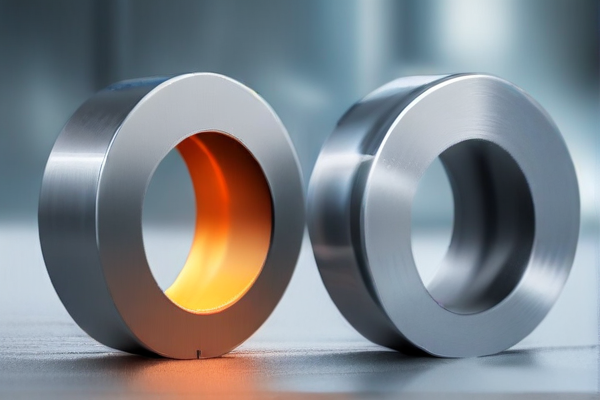
Medical devices necessitate materials with high precision, superior surface finish, and consistent performance attributes. Cold rolled steel has become a preferred choice in this domain due to its enhanced mechanical properties and dimensional accuracy. The cold rolling process involves passing the steel through rollers at temperatures below its recrystallization point, which increases its strength through strain hardening. This results in a smoother, more polished surface, which is critical in medical devices where surface finish can impact both functionality and sterility. Cold rolled steel’s tighter thickness tolerances and superior yield strength ensure that components such as surgical instruments, medical implants, and various diagnostic and therapeutic devices meet stringent quality and safety standards.
In contrast, hot rolled steel, processed at temperatures above recrystallization, is typically used where detailed precision and the highest surface quality are less critical. While hot rolled steel is less expensive and ideal for applications requiring large structural components within medical devices, such as hospital beds and imaging equipment frames, its rougher surface and variable thickness are less suited for intricate and high-precision components. Hot rolled steel is also more malleable, which can be beneficial for forming complex shapes, but may necessitate further machining to achieve the desired smoothness and tolerance required in high-stakes medical applications. Choosing between cold rolled and hot rolled steel in medical device manufacturing hinges on balancing performance requirements, cost-effectiveness, and the specific demands of the application at hand.
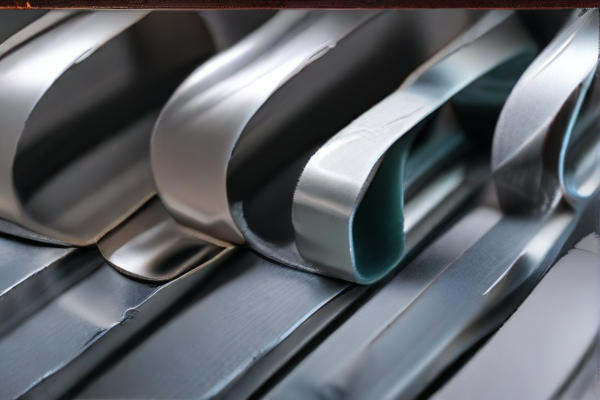
Cold rolled and hot rolled steel are two distinct forms of steel processing that significantly influence machining and manufacturing applications. Hot rolled steel is processed at temperatures above the recrystallization point of steel, which typically exceeds 1,700°F. This method allows the steel to be easily shaped and formed, resulting in a product that is more malleable and easier to work with during the initial stages of fabrication. Hot rolled steel is typically used in construction, railroad tracks, and as structural components due to its strength, versatility, and lower cost. However, the surface finish of hot rolled steel is rougher and less precise, which can be a drawback for applications requiring tight tolerances or a smooth finish.
Cold rolled steel, on the other hand, is processed at room temperature after being hot rolled. This additional processing step greatly enhances the steel’s strength and hardness while providing a more refined surface finish. Cold rolling compresses the material, making it denser and smoother. Consequently, cold rolled steel is preferred in applications requiring a high degree of precision, such as in the automotive industry, home appliances, and furniture manufacturing. The superior surface quality and tighter dimensional tolerances make cold rolled steel ideal for parts where aesthetics and exact measurements are crucial. However, this enhanced quality comes at a higher cost and can involve more challenging machining processes due to the increased hardness and reduced ductility.
In summary, the choice between cold rolled and hot rolled steel depends largely on the specific requirements of the machining and manufacturing project, balancing factors such as strength, precision, finish, cost, and ease of processing.



1. What is the difference between cold rolled and hot rolled steel?
Hot rolled steel is processed at high temperatures, making it more malleable and easier to shape. Cold rolled steel, on the other hand, is processed at room temperature, resulting in a more precise, smooth, and refined finish.
2. Which type of steel is better for high-quality work?
Cold rolled steel is generally considered better for high-quality work due to its smoother finish and tighter tolerances. However, the best choice depends on the specific requirements of your project.
3. What are the main applications for hot rolled steel?
Hot rolled steel is commonly used in construction projects, where precise shapes are not critical, such as in railroad tracks, I-beams, and heavy machinery parts.
4. What are the main applications for cold rolled steel?
Cold rolled steel is typically used for products that require tighter tolerances and a superior surface finish, such as automobile parts, furniture, and home appliances.
5. Is there a cost difference between hot rolled and cold rolled steel?
Yes, cold rolled steel is generally more expensive due to the additional processing steps required to achieve its refined properties.
6. Can SourcifyChina factory customize the steel according to our precise requirements?
Yes, SourcifyChina factory is well-equipped to customize both hot rolled and cold rolled steel according to your specific project needs.
7. How does SourcifyChina ensure the quality of its steel products?
SourcifyChina implements rigorous quality control measures, including material testing, inspection at various stages of production, and final quality checks to ensure all steel products meet industry standards.
8. What is the lead time for orders from SourcifyChina factory?
Lead times can vary based on order size, specifications, and current production capacity. Generally, lead times are discussed during the initial consultation to provide an accurate estimate.
9. Does SourcifyChina factory offer samples for quality assessment?
Yes, SourcifyChina can provide samples for initial quality assessment upon request, to ensure our products meet your specifications before full-scale production.
10. How does SourcifyChina support customers post-delivery?
SourcifyChina offers comprehensive customer support, including technical assistance, addressing quality concerns, and flexible return policies for any unforeseen issues, ensuring client satisfaction.
When selecting between cold rolled and hot rolled steel from SourcifyChina factory, it’s essential to understand their differences and respective advantages.
Cold Rolled Steel:
1. Process: Cold rolling involves processing the steel at room temperature. This process increases strength through strain hardening and results in a smoother finish.
2. Benefits:
– Precision: Offers more precise dimensions and a higher quality surface finish, making it ideal for applications requiring a high degree of accuracy and aesthetics.
– Strength: Typically stronger than hot rolled steel due to strain hardening.
3. Applications: Suitable for products requiring tight tolerances and smooth surfaces, such as automotive parts, home appliances, and furniture.
Hot Rolled Steel:
1. Process: Hot rolling is performed at high temperatures, around 1700°F. This makes the steel easier to shape and form.
2. Benefits:
– Cost-Effective: Generally cheaper due to the simpler manufacturing process.
– Flexibility: More malleable, making it suitable for structural components that require welding or forming.
3. Applications: Used for larger structural components like I-beams, channels, or heavy equipment.
Comparison:
– Cost: Hot rolled steel is less expensive but comes with a rougher surface and looser tolerances.
– Finish: Cold rolled steel has a smoother finish, ideal for visually critical applications.
Tip for SourcifyChina Clients:
– Specify your project’s requirements clearly to SourcifyChina factory. For projects demanding high precision and superior finish, opt for cold rolled steel. For cost-sensitive projects where surface finish is less critical, hot rolled steel will be more economical.
By understanding these differences, you can ensure you select the best steel type for your project, optimizing both cost and performance.
Sure! Here’s a concise FAQ for sourcing cold rolled vs. hot rolled steel from SourcifyChina factory:
Q: What is the main difference between cold rolled and hot rolled steel?
A: Cold rolled steel is processed at near-room temperatures, resulting in a smoother finish and tighter tolerances. Hot rolled steel is processed at high temperatures, making it easier to shape and form.
Q: How does the cost of cold rolled steel compare to hot rolled steel?
A: Cold rolled steel tends to be more expensive than hot rolled steel due to additional processing steps that refine its finish and mechanical properties.
Q: What applications are ideal for cold rolled steel?
A: Cold rolled steel is ideal for precision applications such as automotive parts, appliances, and furniture due to its superior surface finish and dimensional accuracy.
Q: What applications are ideal for hot rolled steel?
A: Hot rolled steel is commonly used in construction, welding, and structural components where precise dimensions are less critical.
Q: How do I specify my requirements when ordering from SourcifyChina?
A: When placing your order, clearly specify whether you need cold rolled or hot rolled steel, along with dimensions, grade, and any special requirements.
Q: What is the minimum order quantity (MOQ) for sourcing steel from SourcifyChina?
A: MOQs can vary based on the type and specifications of the steel. It’s best to contact SourcifyChina directly for detailed information.
Q: Does SourcifyChina provide quality certifications for their steel products?
A: Yes, SourcifyChina offers quality certifications, including mill test reports and ISO certifications, to ensure product quality.
Q: What are the lead times for delivery?
A: Delivery lead times depend on the order size and specifications. Typically, lead times range from a few weeks to a couple of months. Confirm with SourcifyChina for specific timelines.
Q: Can I request custom steel grades from SourcifyChina?
A: Yes, SourcifyChina can accommodate requests for custom steel grades. Provide detailed specifications when making your inquiry.
Q: What payment methods are accepted by SourcifyChina?
A: SourcifyChina accepts various payment methods including wire transfers, credit cards, and Letters of Credit (LC). Contact them for detailed payment terms.
When sourcing cold rolled and hot rolled steel from SourcifyChina factory, it’s essential to understand the differences and considerations to ensure you receive the right material for your project needs.
1. Understand Material Differences:
– Hot Rolled Steel: Manufactured at high temperatures, more malleable, less precise dimensions. Ideal for construction and structural applications.
– Cold Rolled Steel: Further processed at room temperature, better surface finish, tighter tolerances. Suitable for precision engineering and aesthetic applications.
2. Specify Requirements Clearly:
– Clearly communicate your material specifications, including grades, dimensions, and tolerances.
– Mention the intended applications to ensure the supplier understands your quality requirements.
3. Check Factory Certifications:
– Verify that SourcifyChina factory holds certifications like ISO 9001 to ensure quality management systems are in place.
– Request mill test reports or quality assurance documentation.
4. Request Samples:
– Before placing large orders, request samples of both cold rolled and hot rolled steel to evaluate quality and suitability.
5. Evaluate Costs and Lead Times:
– Hot rolled steel is typically cheaper but might have longer lead times due to processing requirements.
– Compare costs against your budget and project timelines.
6. Consider Logistics:
– Factor in shipping costs and import duties.
– Ensure SourcifyChina factory has reliable logistics partners for timely delivery.
7. Negotiate Terms:
– Discuss payment terms, minimum order quantities, and delivery schedules.
– Establish clear terms on quality inspections and returns policy in case of discrepancies.
By adhering to these tips, you can effectively source the right type of steel for your needs while maintaining quality and budgetary control.

If you require packaging machine for your product, SourcifyChina should be your primary option. Please send us your detailed specifications and obtain an immediate quotation.
Copyright © 2024 SourcifyChina All Rights Reserved.